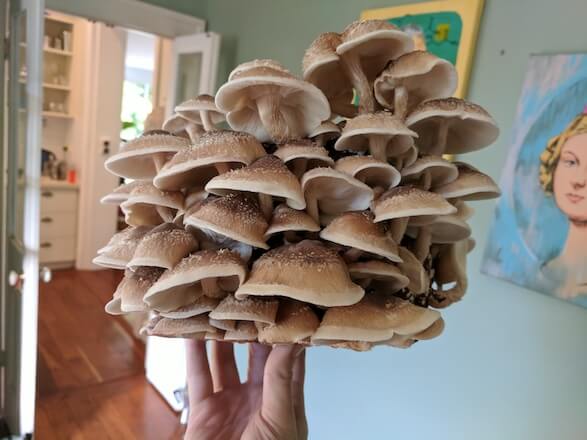Watching each step of the mushroom lifecycle unfold before you a fascinating process. The first time that you see baby mushrooms (pins) emerging from your mushroom blocks, there’s a strong chance that you’ll be hooked.
There are many reasons to grow shiitake mushrooms, particularly if you live in the city. Gourmet mushrooms are delicious to eat, they are full of vitamins and minerals, are high in protein and low in fat. You don’t need much space to grow them, in fact, you can be successful using a small plastic tub or a bucket if you’re living in an apartment.

Shiitake mushrooms cover this sawdust block
In most western countries, gourmet mushrooms are considered a high value crop. For example, in Australia you can expect to pay 4-6 times the price of button mushrooms, approximately $50-60 kg. Growing mushrooms requires minimal resources, most types grow well on agricultural waste, such as straw and sawdust. As a bonus, once you’ve finished growing mushrooms on this waste, they will have broken it down into a rich mushroom compost that’s good for your garden.
This tutorial is separated into sections that at first glance may seem like it’s back to front. In my opinion, it’s best to start with fruiting mushroom blocks as it’s easiest to have some success and can prevent you from getting discouraged.
- Fruiting and Harvesting: This section details ways to fruit shiitake mushroom blocks requiring no special equipment.
- Inoculating substrate: This section involves creating your own mushroom blocks from grain spawn. Many commercial operations perfect this step and run viable businesses without creating their own spawn.
- Preparing mushroom spawn: Here we look at creating grain spawn from agar and liquid cultures.
- Working with cultures: Maintaining your own mushroom culture library can save you a lot of money and is an interesting process.